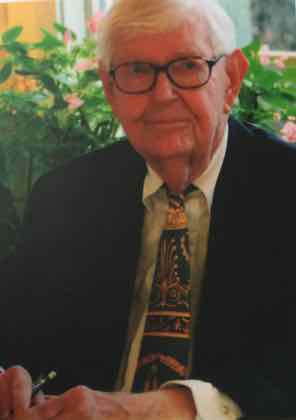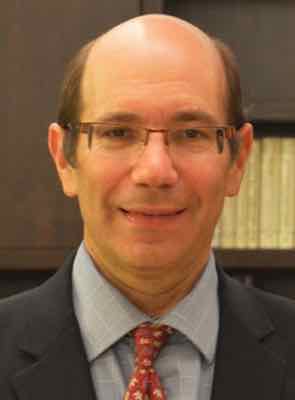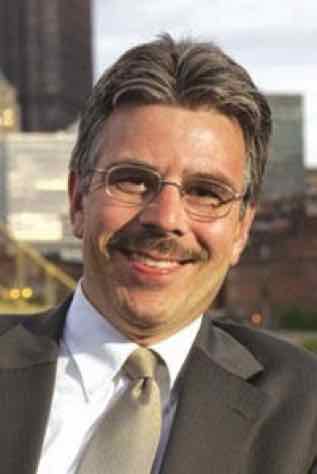“[Vince] Foster drove to a park in McLean, Virginia overlooking the Potomac and shot himself,” wrote Dr. William E. Leuchtenburg, noted modern American history scholar and the William Rand Kenan Jr. Professor Emeritus of History at the University of North Carolina at Chapel Hill.
Americans might expect a noted modern American history scholar would have knowledge about significant events like the July 20, 1993, death of Bill Clinton's Deputy White House Counsel, Vincent Foster, when he writes about it in his new 904-page book The American President: From Teddy Roosevelt to Bill Clinton. The truth is Leuchtenburg knows very little.
H.L. Mencken called them “the timorous eunuchs who posture as American historians” and there is more truth in that statement today than there was in 1920. One need look no farther than William Leuchtenburg.
A grade school child using a map can see that Fort Marcy Park is not “overlooking the Potomac.” The Potomac River is across Chain Bridge Road about 400 yards to the North East. But simple research is not Leuchtenburg's strength. Parroting what others in his seriously compromised field have written is.
The professor's larger gaffe is saying that Vince Foster “drove to the park.” Leuchtenburg's history book is not supported with footnotes or endnotes to any research so you just have to guess how he was misled. Instead he lists an extensive bibliography of 315 books, mostly by other so-called historians. His list of books may be why people often say the letters in “PhD” stand for, “piled high and deeper.” It's a real shame that these days so many vulnerable college students have to go into crushing debt studying at the feet of such mountebanks.
If the esteemed Professor Leuchtenburg had read the Report on the Death of Vincent W. Foster, Jr. by the Office of Independent Counsel in Re: Madison Guaranty Savings and Loan Association, available at his university library and online, he could have known, “The FBI concealed that Mr. Foster's car was not in the Fort Marcy lot by the time he was dead.” And “Mr. Foster therefore could not have driven to the park in his Honda as implied in government reports on the death.
Leuchtenburg is typical of incompetent historians frequently quoted by the news media like The New York Times and The Washington Post. The media also publicizes the books of these “scholars.”
Another sad example of the historian genre is Gil Troy, professor at McGill University and author of almost a dozen books on 20th century U.S. history. In his recent book, The Age of Clinton: American in the 1990s, he wrote, “Vince Foster, the deputy White House counsel, drove to Fort Marcy Park in Virginia, despondent.”
Thus, on the same topic the much younger Troy displays the same sort of slipshod scholarship as Leuchtenburg, an ill portent for the future of the profession on our continent. Troy, too, could have read the official report on this topic, but instead he identifies his source as another book, Bill and Hillary, by another historian, William H. Chafe, the Alice Mary Baldwin Professor of History at Duke University. Chafe wrote, “[Foster] went to a park in Virginia, parked his car, and shot himself in the head.” But Chafe is the end of the road because he offers no source for his erroneous information.
Troy, coincidentally or not a strong partisan of Israel, is so well thought of in certain suspect circles that the History News Network named him one of its first “Top Young Historians.”
Law Professors Just As Bad
Poor scholarship is not limited to the history profession. The Fordham Law Review (1999) published an article, Dead man's privilege: Vince Foster and the demise of legal ethics, by University of St. Thomas law professor Michael Stokes Paulsen, who offered numerous motives why Vincent Foster committed suicide. Such speculation is a waste of time if Foster did not kill himself.
Aristotle said knowing "that it is" precedes knowing "why it is." Before assigning motives of “why” Foster committed suicide, it is important to know his death was a suicide. Paulsen foolishly presents his reasons why something “happened” that the evidence strongly suggests never happened.
Paulsen's entire article rests on the following statement in his introduction: "On July 20, 1993, Vincent Foster, Jr., the Deputy White House Counsel and personal friend of President Bill Clinton and First Lady Hillary Rodham Clinton, finished lunch at his desk, left his office in the West Wing of the White House, and drove to Fort Marcy Park in suburban northern Virginia, where he took his own life by putting a .38 caliber revolver in his mouth and shooting himself through the head."
The source duly given by Paulsen for this statement is The Office of Independent Counsel (OIC), Report on the Death of Vincent W. Foster, Jr., In Re: Madison Guaranty Savings & Loan Association at 1-3, 18-19 (1997).
The Fordham Law Review editors apparently neglected to verify Paulsen's references. Had they done so they would have discovered that the OIC report does not state that Foster drove to Fort Marcy Park, neither on the pages referenced by Paulsen, nor anywhere in the entire report. In fact, the second volume of the report states the opposite, making it clear that Foster's car was not at the park and he could not have driven to the park.
Paulsen, like Troy and Leuchtenburg, succeeds in demonstrating his flawed knowledge about the subject. The Washington Post called Paulsen “one of the leading conservative constitutional law scholars in the country.” Paulsen has also been a guest blogger on that newspaper's web page. As it happens, on August 15, 1993, the Washington Post was one of the first to publish the error that Foster “drove to Fort Marcy Park,” in a lead article by David Von Drehle.
Paulsen's article would be more accurately titled, “The demise of legal scholarship.”
Another popular scholar with the media is Ken Gormley, Dean of the Duquesne University School of Law. In his best-selling book The Death of American Virtue: Clinton vs. Starr he wrote, “In mid-afternoon, according to official reports, Vince Foster drove his gray 1989 Honda Accord bearing Arkansas license plates to Fort Marcy Park in Fairfax County, Virginia.”
Gormley wrote, “according to official reports” implying that he actually read them and understood what he was reading. The Office of Independent Counsel, he says, “filed a fat 114-page report on Vince Foster.”
The complete report, however, is considerably longer than 114 pages. The complete report is, in fact, 137 pages in length. It doesn't take an expert on the Independent Counsel statute like Gormley to notice the additional 23 pages. Persons named in the report were permitted to ask the court to include comments and factual information to insure the report would be fair and complete, and this they did. These additional pages are every bit as much a part of the official report as what was written by Starr's team.
Paulsen quoted from the first 114 pages of the report throughout his article, and this was his mistake. In the table of contents, page iii, the authors listed “Mr. Foster's Car at Fort Marcy.” On page 21, though, they say that witness C2 (Patrick Knowlton) saw a “rust brown car with Arkansas license plates.” In a footnote they say that Foster's car was “a gray Honda Accord with Arkansas license plates” and make nothing of the color discrepancy right there on the same page.
FBI agents Larry Monroe and William Colombell tried to convince Knowlton that the older brown Honda with Arkansas tags that he saw may have been Foster's newer gray Honda. Unable to shake Knowlton's testimony they falsified the interview report to say Knowlton saw Foster's newer “1988-1990” Honda at Fort Marcy Park. The news that the FBI falsified Knowlton's account appeared only in a London newspaper and was ignored by the American media.
Knowlton then fell victim to witness intimidation before his grand jury testimony and even reporter Christopher Ruddy a critic of the official investigation wrote that “Knowlton spotted Foster's Honda in the lot at Fort Marcy Park.” Knowlton fought back heroically and managed to convince the 3-judge panel that appointed Starr to include evidence of the cover-up in the final report.
Knowlton was not alone in seeing the early 80s brown Honda at Fort Marcy Park. Starr's associate independent counsel Brett Kavanaugh admitted in a tape recorded telephone conversation with Reed Irvine that other civilians at the park also saw the brown Honda and “all the police and medical personnel that were in the park also described it as brown.” Officially 25 police and medical personnel were at the scene.
Furthermore, no key for a 1989 Honda is visible in the FBI official photograph of Foster's keys, called exhibit Q7.
The Complete Picture
To understand the deception in volume one of the report, which, unlike the historians Leuchtenburg and Troy, both Paulsen and Gormley referenced, it is necessary to examine volume two of the report, titled Appendix to the Report on the Death of Vincent W. Foster Jr., containing the comments of Kevin Fornshill, Helen Dickey, and Patrick Knowlton.
The complete two-volume report is available at university libraries or through the HAITH digital library. http://catalog.hathitrust.org/Record/003263302
Starr submitted his report on Foster's death to the three-judge panel and those judges ordered Starr to include additional evidence from a grand jury witness, Patrick Knowlton, who had been at Fort Marcy Park where Foster's body was found.
The additional evidence from the official investigative records contradicted Starr's conclusion of “suicide” on several points: Foster's car was not at the park, Foster did not own the gun, there was a gunshot wound in Foster's neck, and crime scene photos and autopsy x-rays were missing. Knowlton also provided evidence that he was the victim of grand jury witness intimidation.
We need not speculate why the three-judge panel added Knowlton's comments. The notes of the judges' discussion are found in Box 11 of the papers of John Butzner at the University of Virginia Law Library. “[Knowlton] does comment on specific findings and conclusions in the report,”argued Judge Peter Fay, “He contradicts specific factual matters and takes issue with the very basics of the report filed by the [Independent Counsel]."
Judge Butzner concurred, “I suspect if we deny the motion we will be charged as conspirators in the cover-up,” [emphasis added] he wrote. “I suggest we let the motion and attachments speak for themselves.” The motion and attachments did not “speak for themselves” as Butzner envisioned because he reckoned without the ulterior motives and the plain incompetence of those who would present them to the world…or would fail to do so.
In a nine-page motion, Starr asked the judges to reconsider and argued that the additional evidence should not be included in the final report. The next day Judges David Sentelle, John Butzner, and Peter Fay, unanimously denied Starr's motion and ordered the evidence be included in the report. This marked the first time in history that an Independent Counsel was ordered to include evidence of criminal activity by his own investigators in his own report.
Those 20-pages added to the final report are also found in Box 11. Ken Gormley either did not understand the significance of these important historic documents or he chose to ignore them. In his book, Ken Gormley referenced much less significant documents from Box 11 concerning the appointment of Ken Starr as independent counsel.
Gormley also interviewed Judge Butzner before he died and again failed to learn or tell us anything about the historic appendix to the report on Foster's death.
Wrong about the Gun, Too
In another blunder Gormley wrote, “…Foster sat down, cocked an antique .38-caliber revolver that had belonged to his father…and fired a single bullet into his mouth.”
The error that the gun belonged to Foster may have come from page 81 of volume one of the report, which states, “On May 9, 1994, [Mrs. Foster] was shown the actual gun that was recovered and said, according to the interview report, that the gun 'may be a gun which she formerly saw in her residence in Little Rock, Arkansas and that 'she may have seen the handgun . . . at her residence in Washington."
But there is a flaw in this account that the silver gun brought from Little Rock was the one found at the scene: The official death weapon is entirely black. Volume two of the report states, "The FBI knew that Mrs. Foster could identify only a silver gun, so FBI agents showed her a silver gun, told her it was found in Mr. Foster's hand, and falsely reported that she identified the (black gun found in Mr. Foster's hand as belonging to Mr. Foster." All of this was available in Box 11 and missed by the legal scholar, Ken Gormley.
An OIC internal 30-page memorandum by Miguel Rodriguez, Kenneth Starr's original lead investigator of Foster's death, found at the National Archives documented his meeting with Mark Tuohey, Brett Kavanaugh, and Jeff Green to discuss the lack of evidence that Foster committed suicide. For example, he wrote the following about how the U.S. Park Police present at Fort Marcy staged the crime scene where Foster's body was discovered:
“[Robert] Edwards apparently showed these photos to [Christine] Hodakievic plus Edwards' own photos. Later, I suggested, after the corpse was staged with the revolver brought by [Cheryl] Braun, [Pete] Simonello and [John] Rolla. [sic, incomplete sentence] New photos were taken and thus [Franz] Ferstl's were never produced to the OIC. This explained the different arm/body distance, gun/hand positions, Hodakievic's problems with the photos, Ferstl's missing photos and EMT problems with the photos (and their observations of a different gun).”
In his resignation letter Rodriguez wrote, “…the existing FBI interview reports and USPP (United States Park Police ed.) interview reports do not accurately reflect witness statements.” Associate Independent Counsel Rodriguez refused to participate in Starr's cover-up.
It is pathetic that distinguished history and law professors are not embarrassed to be on record supporting what Judge Butzner called, “the cover-up.” Leuchtenburg, Troy, Paulsen, and Gormley are comfortable in their ignorance, confident that their colleagues are too intellectually lazy, or fearful of the ruling powers, to conduct any research of official source documents.
These four much-admired scholars are really worse than the uninformed man in the street. In spite of pretensions to the contrary, they are either misinformed or they are dishonest and doing their best to see that their readers will be misinformed about a very important matter. All of them wrote something that is not supported by the evidence, that is, that Vincent Foster drove to Fort Marcy Park on the last day of his life. In the process they all also overlooked a very significant historic event, that evidence of a cover-up of Vincent Foster's murder was included as part of the official final report. The country should expect more from its cap-and-gown set. Those who dwell in darkness and seek nothing higher than the approval of elite power will never find the truth; much less will they be able to impart it to others.
December 23, 2015
Addendum
I neglected to mention that on November 4, 2015, Ken Gormley was named the 13th president of the Roman Catholic Duquesne University by the board of directors and he will begin on July 1, 2016, when the current president retires. In a statement announcing the decision, the chairperson of that board, Marie Millie Jones, stated, “Ken Gormley is deeply committed to our Spiritan mission.”
Rather than taking her word for it, the reader might want to compare his career with the University's explanation of that mission:
The Spiritan Congregation began in France in 1703. Theirs is a story that spans more than three centuries, criss-crosses continents in war-time and in peace, and features the selflessness of thousands of priests, brothers and lay persons who have forgone society's aspirations to power, prestige, and wealth. Rather, they made and continue to make profound sacrifices to minister to the poor and disadvantaged.
It seems to this writer that one could make a better case that Gormley's career, advanced as it has clearly been by saying what is pleasing to those in power rather than speaking the truth, represents an almost perfect antithesis of the Spiritan tradition.
For his part, Kenneth Starr, the former Independent Counsel, is the current president of the Southern Baptist Baylor University. Mark Tuohey, Starr's former deputy Independent Counsel is a current member of the board of trustees of the Catholic University of America.
Hugh Turley
December 26, 2015
Professors Can't Explain
Vince Foster's Last Ride
Distinguished Chair and Professor Michael Stokes Paulsen
University of St. Thomas School of Law
University of Maryland Professor Emeritus
Keith W. Olson said this "article deserves
serious attention" calling it "impressive."







Dr. William E. Leuchtenburg, the William Rand Kenan Jr. Professor Emeritus of History at the University of North Carolina at Chapel Hill
For more on Leuchtenbrg see Pollyanna on Vince Foster and our Presidents
Dr. Gil Troy
McGill University professor and author of almost a dozen books on 20th century U.S. history
Ken Gormley
President elect of Duquesne University




Return HOME
Judge Ken Starr
President of Baylor University

Ken Gormley and the Three Stooges
President Ken Starr and the Baylor University faculty


But in addition to the sheer volume of information there is the even more portentous fact of falsification and misinformation by which those in power are often completely intent not only on misleading others but even on convincing themselves that their own lies are "historical truth.’"
-Thomas Merton

Ken Starr's associate Independent Counsel Brett Kavanaugh authored the first 114 pages of the Official Report. He discussed the problem of the older brown car that was not Foster's newer gray car witjh Reed Irvine of Accuracy in Media